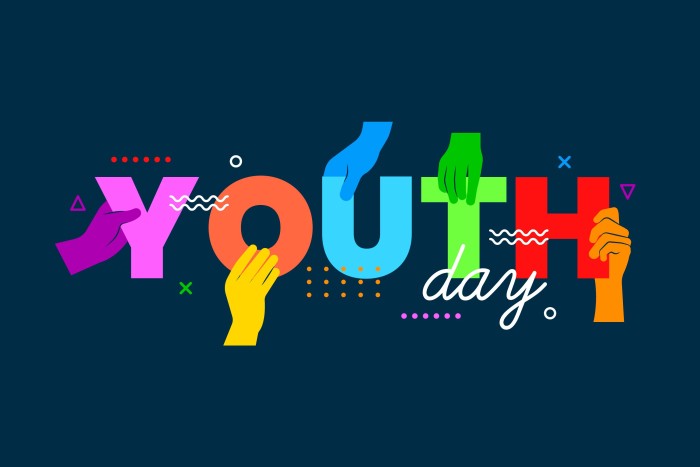IMANA NEWS
The Significance of International Youth Day 2025
19 August 2025

When a girl turns 15, you would expect her to ask for a party, or even, at the very least, birthday presents. However, Leah Namugerwa didn’t ask for either. Instead, she requested for seedlings so she could plant trees. She also turned this into a ritual for every birthday. This young lady from Uganda is now recognized world over as a climate activist.
Then, we have Malala Yousafzai from Pakistan. Malala fought for her fellow country women’s right to education—risking her own life in the process. Today, she speaks on the world’s most prominent stages and inspires millions.
There are many more such young leaders. Some are leading climate strikes that are crossing continents. Others are quietly pushing clean water projects and advocating for mental health awareness within their communities.
These stories are proving that the youth of today are not just future leaders. They are driving change as we speak. This is why, on 12th August every year, we observe the International Youth Day.
In this blog, we explore everything about this special day. We also discuss why young people are playing such a crucial role in sustainable development.
What is International Youth Day?
International Youth Day is when we come together and celebrate the contributions young people make to our communities. We also take stock of the challenges they face. International Youth Day is commemorated the world over through events like workshops, concerts, talks, as well as cultural and other youth-led programs.
The idea of a day dedicated to the youth was first put forward in Lisbon in 1998, at the World Conference of Ministers Responsible for Youth. The UN General Assembly formalized the concept through Resolution 54/120 a year later.
Every year, a theme is chosen to mark the day. This theme is usually global in nature, but connected to challenges and action at local community levels.
The Theme for 2025
The theme for this year’s International Youth Day is: Local Youth Actions for the SDGs and Beyond. This theme links back to 2015, when the UN Member States adopted a set of 17 objectives, otherwise known as the Sustainable Development Goals.
The plan is to build a healthier, fairer, and more sustainable world by the year 2030, through focusing on areas such as education, clean water, healthcare, equality, and climate action.
While these SDGs are global in nature, real progress can only happen when we put them into action locally.
For example, we can adapt the goal of “clean water for all” to a neighbourhood project that installs infrastructure supporting safe drinking water. Or the goal of “quality education” can be achieved through school programs that help children in your locality thrive.
This adaptation is what’s known as “localizing” the SDGs. It means that we need to take big shared goals like quality education and good health, and break them down to fit the actual situation in our own communities.
And that’s where young people truly shine.
Why?
Well, because young people know their communities really well. They can spot problems early on and will usually have practical ideas to solve them. They also bring a fresh perspective and tons of creativity. This enthusiasm and drive for real change help translate big goals into real changes that we can see and feel.
2025: Why It’s a Milestone Year
2025 is a big year for youth action. It marks 30 years of the World Programme of Action for Youth — a commitment to seeing young people as partners in creating sustainable, inclusive communities.
Additionally, the Second World Summit for Social Development will take place in Doha, in November this year. The ideas sparked by this year’s International Youth Day will play a crucial role in shaping those conversations.
And finally, as a global community, we have only five years left to achieve the SDGs. This adds more urgency to supporting youth-led action.
Global Challenges
The youth today continue to face a number of challenges, even as they lead change. Some of these are:
Limited Access to Decent Work
The International Labour Organization reports that youth unemployment remains nearly three times higher than adult unemployment. In many countries, even educated young people face unstable jobs, underemployment, or a lack of career progression.
Barriers to Education
Quality education remains out of reach for millions of young people because of poverty, together with gender inequality, as well as conflict and inadequate infrastructure.
Mental Health Struggles
The number of young people experiencing anxiety together with depression and stress has been increasing throughout the world. The World Health Organization found that half of all mental health conditions emerge before the age of 14 but the majority remain without treatment. Mental health stigma as well as inaccessible treatment services can create more difficulties.
How You Can Help
Here are some meaningful ways in which you can help empower our youth:
- Mentor a young person
- Support youth-led projects such as community clean-ups and public health drives
- Share their stories on social platforms and in your networks
- Get involved with the Islamic Medical Association of North America (IMANA). You can do this by volunteering, donating or partnering with us to help shape the next generation of healthcare leaders
When we support young people, we’re building communities that are more prepared, more inclusive, and better equipped for the challenges ahead.